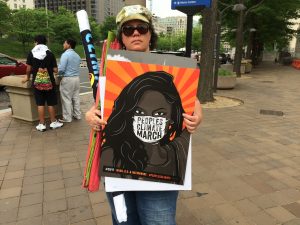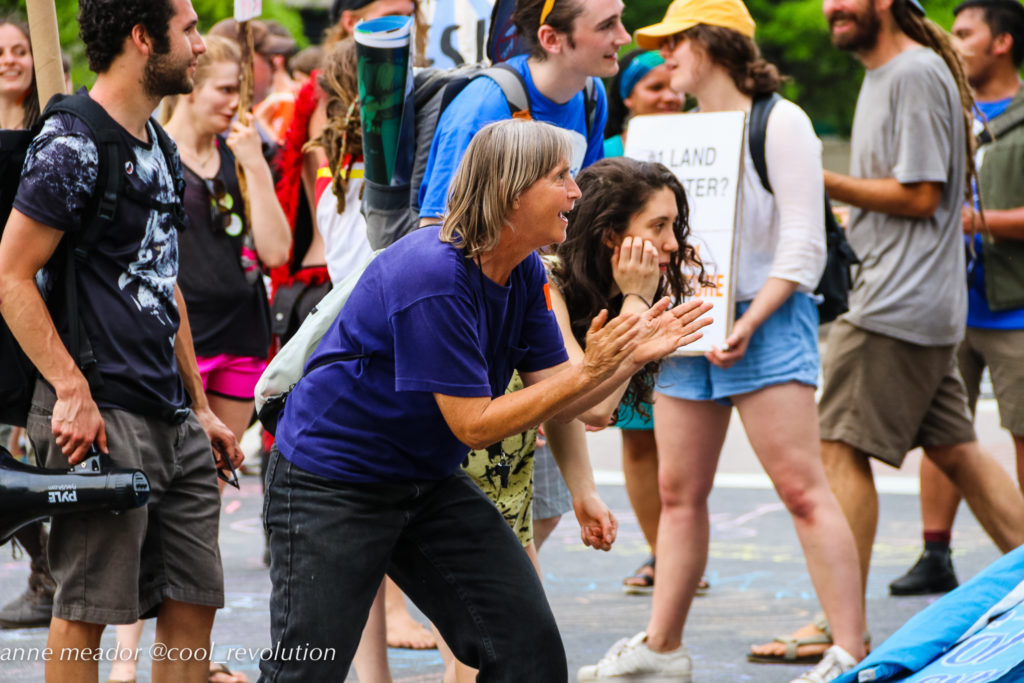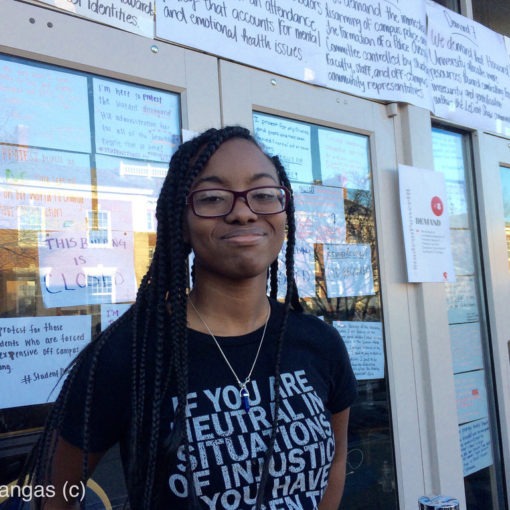
Washington, DC
Hundreds of grassroots environmental groups from around the country rallied Saturday at the U.S. Capitol in a mass march against administration plans to deregulate environmental protections. Among their demands: respect the environment, stop denying climate change exists, continue policies to protect the water and air, and don’t strip EPA regulations.
The broad-based coalition linked climate change to fossil energy extraction as not only the cause of the present period of massive ice melt and species extinction, but also as a nexus to the oppression of minorities and indigenous people. There were over 350 sister marches held in many major cities across the U.S.
Tens of thousands walked down Pennsylvania Avenue, with indigenous people leading the way, past a barricaded Trump International Hotel. They continued to the White House, where they paused to dance, chant, and yell out demands towards the White House as they passed. Police barricades were staged in the middle of Pennsylvania Avenue, splitting it in half to keep marchers far back from the sidewalk next to the White House lawn.

They assembled at the Washington Monument, where they laid signs out in the shape of a giant sun, spelling “Climate Justice” in block letters visible from the sky. At about 5:30 pm, their message was believed to be seen by Trump as his helicopter contingent (usually two helicopters flying together with a decoy) passed overhead.
Later in the afternoon, a small group broke off and rallied at the Trump International Hotel in an effort to “Flood Trump,” blocking access to the hotel for about an hour. They formed a human wave and surged toward the hotel while police blocked them with barricades. They chalked the sidewalk and danced. There were no arrests.
Saturday marked the 100th day into the administration’s efforts to deconstruct government regulations it views as barriers to business activity. But at 100 days, it has achieved nothing it has promised, and many executive orders will certainly be challenged in the courts.
Antonique Smith, a singer who has become known as the “voice of the climate moment,” said, “We are marching today for our existence on this planet.” Smith has gained popularity within the movement for having a career as a singer/actress/performer, but is not afraid to be outspoken. “If we don’t have clean air and water we can’t exist on this planet,” said Smith.
Reverend Lennox Yearwood, President of the Hip Hop Caucus and an activist who has been involved in the climate movement for a decade, said that it was important to keep resisting administration attempts to deny climate change is reality.
“This march is critical, because it’s the building of the last eight years of resistance. We are now at the point where we have climate deniers in office, and we have people in the streets,” he said.

Yearwood pointed out that the climate movement was similar to the civil rights movement of the 1950s and ’60s, but the climate movement was pulling together issues affecting the entire planet. “Hopefully, those who have clean air and water 30 years from now will look back at this as the movement that made that happen,” said Yearwood.
“It was a great way to bring together so many issues that relate to the climate,” said Medea Benjamin, co-founder of CODEPINK: Women For Peace. “We want to do everything that’s opposite of what Donald Trump has done,” said Benjamin.






